#Thessaloniki's Roman Forum
Explore tagged Tumblr posts
Text
Writing Notes: Ancient Greece (1–500 A.D.)

TIMELINE
1 A.D. Roman rule, Greek mainland, 146 B.C.–330 A.D.
125 Roman rule, Greek mainland, 146 B.C.–330 A.D.
250 Roman rule, Greek mainland, 146 B.C.–330 A.D.
375 Byzantine empire, 330–1453 A.D.
OVERVIEW. By the beginning of the first millennium A.D., Rome dominates the Balkans. Roman lifestyle, architectural achievements, and propagandistic endeavors influence art and architecture across the peninsula. As Roman dominion weakens, these territories are vulnerable to a series of attacks by the Goths, a Germanic people from southern Scandinavia. Constantinople is founded as the New Rome, and the triumph of Christianity marks the beginning of the Byzantine era in Greece.
KEY EVENTS
Before 67 A.D. The apostle Paul preaches in several major cities, including Thessaloniki, Corinth, and Antioch. It is at this time that disciples of Jesus are first referred to as Christians.
85–86 A.D. The Dacians, an agricultural people in the loop of the lower Danube, invade Moesia and inflict disastrous defeat on the Romans. In 88 A.D., a victory at Tapae prepares the way for Trajan’s later wars and annexation of Dacia. The Roman emperor Domitian sends engineers to Dacia as part of the peace treaty with the Dacian king Decebalus.
ca. 98–102 A.D. The Library of Pantainos is constructed in the Athenian Agora.
101–106 A.D. The Roman emperor Trajan conquers the Dacians during the First and Second Dacian Wars. His campaigns are memorialized on the spiral frieze of Trajan’s Column in Rome. The column and forum are built with funds largely from the royal treasury of the Dacians.
117 A.D. The Roman emperor Hadrian (r. 117–138 A.D.) completes the Temple of Olympian Zeus, the principal monument in southeast Athens. The emperor also erects a gymnasium and a number of bathing establishments in the vicinity.
ca. 170–180 A.D. Pausanias, a Greek traveler and geographer, writes his Description of Greece, sketching the history and topography of important cities and their surroundings. His accuracy is confirmed by archaeological finds, and his descriptions remain a valuable resource to this day.
257–263 A.D. The Goths raid Greece and Asia Minor. In 267 A.D., they sack Athens, Corinth, Sparta, and Argos.
280 A.D. In response to raids by the Goths, Athens constructs a major fortification wall, the first since the time of Perikles.
293 A.D. Diocletian, a Dalmatian by birth, reorganizes the Roman empire and establishes his famous tetrarchy as a response to difficulties in government. Under his rule, civil and military functions are separated. He makes a determined effort to stabilize the currency and introduce a new fiscal system.
300–305 A.D. Diocletian builds his palace near modern-day Split in Croatia.
330 A.D. Constantinople is founded as the “New Rome.”
378 A.D. The Visigoths defeat the Eastern Roman emperor Valens near Adrianople. The battle is seen as a watershed in the decline of the Roman army and its ability to stem the barbarian invasions.
391 A.D. The emperor Theodosius orders the closing of pagan temples. The Olympic games cease at this time or slightly later in 426 A.D., when the Temple of Zeus at Olympia is destroyed by fire.
Source ⚜ More: Notes & References ⚜ Writing Resources PDFs
#ancient greece#writing reference#writeblr#writers on tumblr#dark academia#spilled ink#history#writing prompt#creative writing#literature#light academia#writing ideas#writing inspiration#writing resources
57 notes
·
View notes
Text

The 2nd century AD Roman Forum or Agora of Thessaloniki, Greece, was discovered by chance in the 1960s.
6 notes
·
View notes
Video
youtube
This is a local's guide to Aristotelous Square in Thessaloniki, Greece with narration, covering all the must-see sights. We are guiding you on a walking tour along Thessaloniki's central and most popular square. We start from the Holy Church of Saint Demetrius, Patron Saint of Thessaloniki.Then we walk a bit further down to the ancient ruins of the Roman Forum and the Bit Bazar area.Just before Egnatia Street, we approach the Statue of Eleftherios Venizelos.We keep walking to the middle part of the semi-pedestrianized area from Ermou to Tsimiski Street, until we finally reach the main square, just by the seafront.
1 note
·
View note
Text

The main photography project commissioned, captured Teight’s identity and provided a nuanced and raw expression of the hotel’s brand.
Located at the heart of the city, the area has been established as a nightlife and fashion destination since the 1980s. Groundbreaking music subcultures of the time formed a vibrant crowd, legendary bars and a hyperlocal spirit that defined the decades to come. Teight was created with the city’s people and street’s culture at heart. Nonchalant and audacious, urbane and edgy, Teight celebrates the neighborhood’s brazen energy. Searching for the cityscape’s narrative, portraits of its people stand out as a bold, unequivocal look at the city’s crowd, the street’s culture and the contemporary scene.The photography, curated by Yannis Bournias in Teight’s rooms and shared spaces, is a social inventory of the city and sets the tone for your own narrative as a an urban dweller.
Alexandra photographed at the Roman Forum, Thessaloniki
Photography/Art Direction by Yannis Bournias
Assistant photographer Panos Tsomakos
Brand Strategy/Development Christina Nika
For Teight Hotel
0 notes
Text
Cultures and Places (tags)
Mainly Roman and Greek artworks from different parts of Europe. Also some pics from Etruscan and other non-Roman/Non-Greek cultures.
https://romegreeceart.tumblr.com/tagged/
A
Aegai
Aenona
Afghanistan
Agricento
Ajerbaijan
Akrotiri
Alexandria
Algeria
Andalucia
Antioch
Aphrodisias
Apollonia-Pontica
Apulia
Aquileia
Aquitane
Arabia
Arabia Petraea
Arcadia
Argos
Arezzo
Ariccia (sanctuary)
Arles
Armenia
Arrotino
Asia Minor
Assos
Assyria
Athens
Attica
Augusta Raurica (Switzerland)
Aurunci (people)
Austria
B
Bad Kreuznach Römerhalle
Baiae
Barbarians
Basilicata
Baths of Caracalla
Belgium
Berthouville (silver treasure)
Bithynia
Black Sea
Bordeaux
Boscoreale
Boscotrecase
Bosporan Kingdom
Brescia
Bulgaria
C
Cabra
Caere / Cerveteri
Caere
Caesarea Mauretania
Cagliari
Calabria
Campania
Campus Martius
Canosa
Cappadocia
Capri
Capua
Caria
Carinthia
Carthage
Celtic
Centocelle
Chalcidice
Chalcis
Chiusi / Clusium
Colosseum
Cologne
Cordoba
Corinth
Corinthian
Crete
Crimea
Croatia
Cumae
Cyclades
Cyprus
Cyrenaica
Cyrene
Cyzicus
Czech Repuplic
D
Dacia
Delphi
Delos
Denmark
Derveni
Dion
Dura Europos
E
East Roman
Eastern Mediterranean
Egypt
Ejica
Eleusis
Elis
Emesa
Ephesus
Eretria
Eryx
Esquiline Hill
Estonia
Etruscans
Euboea
F
Fayum
Felix Romuliana
Ferrara
Finland
Forum Romanum
France
G
Gabii
Gallic empire
Gaul
Gaul 2 (gallic)
Gela
Germania Inferior
Germania Superior
Germania
Germany
Gnathia
Goths
Greece
Greek colony
H
Hellenistic
Herakleion (sunken city)
Herculaneum
Horti Lamiani
House of the Citharist
House of the Centenary
House of the Epigrams
House of the Golden Bracelet
House of the Hanging Balcony
House of Julia Felix
House of Lovers
House of Lucius Cecilius Jucundus
House of Marcus Lucretius Fronto
House of the Vettii
Houses - Case Romane del Celio
Hungary
Huns
I
Illyrians
Ionia
Israel
Italic peoples
Italica
Italy
J
Jordan
Judea
K
Kerameikos
Kingdom of Aksum
Knossos
Kos
Kosovo
L
Latium
Lavinium (Italic cult site)
Lebanon
Leptis Magna
Lesbos
Libya
Limes
Limyra
Locri
London
Lucanians
Luna
Lydia
Lyon
M
Macedonia
Magna Graecia
Mainz
Malta
Mallorca
Mantova
Marathon
Marche
Mauretania
Merida
Mesopotamia
Metapontum
Milan
Miletus
Minoan
Milos
Moesia Superior
Morocco
Mycenae 1
Mycenae 2
Mykonos
Myrina
N
Nabatea
Netherlands
Nemi (sanctuary)
Nimes
Nola
North Africa
Numidia
O
Olympia
Oplontis
Orvieto
Oscan
Osteria dell’Osa necropolis (early italic cultures)
Ostia Antica
P
Paestum
Palatine hill
Palestine
Palmyra
Paphos
Paros
Parthia
Peleus
Pella
Peloponnesos
Penteskouphia
Pergamon
Perge
Persia
Perugia
Petra
Phanagoria
Philippi
Phrygia
Picentes (italic people)
Piraeus
Poland
Pompeii
Pontus
Poros
Portugal
Posillipo
Positano
Potenza
Pozzuoli
Praeneste
Priene
Prima Porta (Livia’s villa)
Ptolemaic-Egypt
Pylos
R
Ravenna
Rhodes
Riace
Rimini
Roman Britain
Roman Britain (England)
Roman Britain (Scotland)
Roman Britain (Wales)
Roman Egypt
Romania
Rome
Russia
S
Sabines
Salona
Samnites
Samonthrace
Samos
Santorini
Sardinia
Sarmatians
Sarsina
Scythians
Seleucid
Seleucid empire
Selinunte
Sicily
Sicyon
Sidrona
Slovakia
Slovenia
Southern Italy
Spain 1
Spain 2 (Iberia)
Spain 3 (Hispania)
Sparta
Stabiae
Stobi
Sweden
Switzerland
Syracuse
Syria
T
Tanagra
Taranto
Tarentum
Tarquinia
Thebes
Thera
Thessaloniki
Thracia
Timgad
Tiryns
Tivoli
Tomis (Ovid died here)
Toulouse
Trastevere
Trier
Tunisia 1
Tunisia 2
Turkey
U
Ukraine
Umbria
V
Veii
Velia
Veneto
Vercelli
Verona
Vienne
Villa del Mitra
Villa Farnesina (Trastevere / Palazzo Massimo)
Villa of the Mysteries
Villa of the Papyri
Villa of Poppaea
Villa Romana del Casale (Sicily)
Vindolanda
Volterra
Vulci
Volsci
Y
Yemen
York
Z
Zeugma
#my tags#culrures and places#Ancient Rome#Ancient Greece#Etruscans#ancient world#ancient art#history
113 notes
·
View notes
Photo

Forum Romanum or Roman Forum was the centre of commercial, political and civilian life for many centuries. Every important city in Roman Empire, like Thessaloniki, had one, where the most civilians were gathered. Discover every layer of history in every city in Greece with @inspirationventures
1 note
·
View note
Photo

Interested in learning more of Thessaloniki ancient past, I found myself standing before the large open aired archaeological site of the ancient city heart. 💕 The 1st century Roman Forum, more commonly known as the Ancient Agora - Market place was mistakenly unearthed during in the 1960s. 💕 This site had been the trading place and the city’s administrative centre from the 3rd century BC until the 5th century AD. Its large open area was surrounded by various elegant and noteworthy buildings of varying functions that showed the financial prosperity and growing strategic importance of the city during Hellenistic and Roman times. 💕 I learn that the area was not only the city’s Agora; as a number of other prominent finds revealed the city’s Mint, having issued its own currency in 187 BC, the Odeion (ancient theatre), a pathed colonnade (columned and covered walkway), public and private baths, a hetaera house (an educated companion/courtesan in ancient Greece), a taverna (a place for eating) and other smaller finds. 💕 In addition to other finds of an ancient temple and early Christian tombs from the 4 – 7th century that were found close by the Ancient Agora site. 💕 It's such an enriching experience to learn more about humanity's ancient pasr, in this part of the world. 💕 What ancient historical sites have you visited on your travels? You can read 📖 more about Thessaloniki ancient past over on the Blog. See link in bio. There's also a free downloadable City Guide. 💕 Like, save and comment below. 😉 (at Ρωμαϊκή Αγορά Μουσείο Θεσσαλονίκης-Roman Agora Museum Thessaloniki) https://www.instagram.com/p/B9D92aJl755/?igshid=1sdkmn45uzo4x
0 notes
Photo
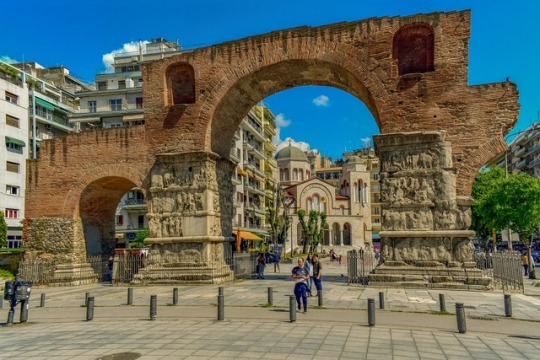
Don't overlook Thessaloniki when planning your vacation in Greece. There's plenty of things to do in Thessaloniki, and you'll enjoy its laid back vibe.
Thessaloniki Sightseeing Guide
Like many people, you may have never considered Thessaloniki as a possible destination to visit in Greece. Yet, this lively coastal city has lots to offer. This is our Thessaloniki sightseeing guide, including the top things to do in Thessaloniki, main attractions, and some hidden gems.
Where is Thessaloniki?
Thessaloniki is in North Greece, in the administrative region of Central Macedonia. You can get to Thessaloniki through an international flight or through a local flight / train / bus from Athens.
Thessaloniki is often the starting point for people who want to go to Chalkidiki, an area famous for its beaches. Stay a day or two if you can though. It’s also a fantastic city break destination in Greece.
What is so special about Thessaloniki?
Greece’s second biggest city, Thessaloniki is often ignored by people visiting Greece. Which is too bad, as Thessaloniki is one of the most interesting and charming cities in Greece.
With tons of sightseeing, amazing food, a vibrant night life, a lively seaside promenade, a relaxed vibe and thousands of students, Thessaloniki can quickly become one of your favourite cities in Greece.
History of Thessaloniki
Although it’s a fairly compact city, Thessaloniki has many interesting sights, from several different eras. In order to appreciate better what to see in Thessaloniki, it makes sense to know a little about the city’s past.
Like most of Greece, Thessaloniki has a very long and rich history. The city was founded in 316/315BC, a few years after the death of Alexander the Great.
Its founder was Kassandros, one of Alexander’s generals, who was later pronounced King of Macedon. The city was named after Kassandros’ wife Thessaloniki, who was also Alexander’s half-sister.
The first walls were built around the city in the 2nd century BC, in order to protect it from foreign invasions. Regardless, the city passed on to the Romans in 168 BC, after the Kingdom of Macedon was destroyed.
Due to Thessaloniki’s strategic placement on the map, it soon became an important commercial centre, trade hub and port. The city’s acropolis was built in 55 BC.
Churches in Thessaloniki
Christianity first arrived in Thessaloniki through Apostle Paul, in around 50 AD. Although Paul was better received in Thessaloniki than in Athens, it took about four centuries for the first Christian church, Agios Dimitrios, to be built.
Today a large basilica with impressive catacombs, the church is named after the patron saint of the city. At that time, Thessaloniki was a very important city, second only to Istanbul.
Many of the existing sites, such as the Rotunda, Galerius’ Arch and the Roman Agora, belong to that era.
Byzantine Empire Era
After the fall of the Roman Empire and during the Byzantine era, Thessaloniki was attacked by barbarians, the Slavs, the Saracens and the Bulgarians.
Apart from the ongoing attacks, a massive earthquake in 620 AD destroyed several buildings, and parts of the city had to be rebuilt.
The era between the 10th and 12th centuries was generally peaceful, with a few attacks by the Bulgarians and the Normans.
Crusaders in Thessaloniki
In the beginning of the 13th century, Istanbul was conquered by the Francs of the Fourth Crusade. As a result, Thessaloniki came for the first time into the hands of the Latin Empire, though new conquerors and rulers passed by the city in the decades that followed.
Nevertheless, commerce and Byzantine art flourished during that time, and this can be observed in some of the city’s most important churches, like Agia Sofia.
Ottoman Thessaloniki
After a brief period of conquest by the Venetians, Thessaloniki became an Ottoman city in 1430. As a result, the already significant Muslim and Jewish populations of the city started growing. This meant the Greek population of the city became a minority, and many of the Orthodox churches were transformed into mosques.
The city’s landmark, the White Tower of Thessaloniki, was built in this period 1535 to be used as a prison.
For the duration of the next centuries, Thessaloniki was home to several distinct populations, mostly clustered in different areas of the city – as an example, many Ottomans lived in the Ano Poli (Upper Town).
Great Fire of Thessaloniki
The Great Fire of Thessaloniki, in 1917, destroyed a large part of the centre of the city, though some of the mosques and hammams, built in stone, were left fairly intact. Many buildings in the Ano Poli survived, and as a result Ottoman architecture in Thessaloniki is quite prominent.
After the Great Fire, about a fourth of the population of the city, mostly Jewish people, were left homeless. Many of them emigrated to other countries later, to be soon replaced by refugees who came from Turkey after the population exchange in 1921. The parts of the city that had been destroyed were later reconstructed according to a modern plan.
History Lesson Over!
Too much information? Sure – we told you the city has a long and rich history! And this is without any information about the involvement of Thessaloniki in the Balkan and World Wars, which is another long chapter in the city’s history.
What to see in Thessaloniki
Now that you have got a quick idea of Thessaloniki’s history through the centuries, you can understand that, just like Rome, Thessaloniki is really an open museum, with Roman and Byzantine buildings everywhere. With this in mind, here are the top things to do and see in Thessaloniki.
Visit the Roman monuments in Thessaloniki
The Roman Forum in Thessaloniki, known also as Ancient Agora or Roman Agora, was constructed by the Romans in the 1st century AD. Just like the Ancient Agora in Athens, it was the place where all commercial, financial, social and religious activities were taking place. The Agora was active until the 4th century, when the centre of the city moved further east.
Within the grounds of the Agora you can see an ancient amphitheatre which has been restores, as well as remains of certain buildings and underground corridors. The Roman Forum also has a museum, partly hidden underground – don’t miss it!
Galerius Palace Complex
Alongside Navarinou Square, you can see the remains of the Galerius Palace Complex. The luxurious, massive complex was built by Emperor Galerius, who realised the potential of the city early on and wanted to construct a palace to match.
It included several buildings, many of which can still be seen today, and spread over a total area of 15 hectares / 37 acres. Apart from the Roman monuments, Navarinou Square is a hangout for students, and is lined with many interesting shops.
The Arch of Galerius, known as “Kamara” is a popular meeting point for locals. It was built in the beginning of the 4th century AD, and much of its decoration highlights Emperor Galerius’ winning battles against the Persians.
Visit the UNESCO monuments in Thessaloniki
In 1988, fifteen Paleochristian and Byzantine monuments in Thessaloniki were categorized as the Paleochristian and Byzantine Monuments of Thessaloniki UNESCO World Heritage Site. This is one of 18 UNESCO Heritage sites in Greece.
The most significant UNESCO buildings in Thessaloniki are:
The Byzantine Walls of Thessaloniki
The Byzantine Walls of Thessaloniki were first constructed in the 2nd century BC, and were later rebuilt and reconstructed several times, by the Romans, the Byzantines and the Ottomans.
They were around 8 km in total, and about half of them have survived. Inside the Walls you can see the Heptapyrgion Castle, which was used as a prison until 1989.
Today it is open to visitors as a museum, and often hosts interesting exhibitions. This is one of the best places for Thessaloniki views.
The Basilica of Agios Dimitrios
The basilica of Agios Dimitrios stands in the place of an early Christian temple, which was destroyed during the earthquake in 620 AD and was later rebuilt.
The basilica suffered major damage in the Great Fire in 1917, and was subsequently restored. Fortunately, many of the 5th century mosaics have survived. The basilica hosts a Byzantine exhibition in its extensive catacombs.
The Rotunda of Thessaloniki
The Rotunda, which was recently opened to the public, was built by the Romans and was later expanded and served as a Christian church.
Even though part of the Rotunda was destroyed by the earthquake in 620 AD, many of its original mosaics remain intact. Don’t forget to check out the acoustics!
Other UNESCO monuments in Thessaloniki
Dotted around Thessaloniki, you can see, or perhaps literally stumble upon, many more UNESCO Byzantine monuments. During the Ottoman era, all of the Byzantine churches in Thessaloniki were transformed into mosques, and much of the artwork was covered in plaster. Fortunately, due to restoration projects, a lot of it has been uncovered.
If you have several days in Thessaloniki, it’s worth visiting all of the Byzantine churches in Thessaloniki. Even if you are not too interested in Byzantine architecture, you will be impressed with some of the mosaics or the frescoes.
For many of them, opening hours are irregular and vary a lot depending on season and availability of personnel. Overall, your best bet is to visit in the morning.
Byzantine Churches in Thessaloniki
The church of Agia Sofia, with amazing frescoes, was built in the 8th century and replaced a Paleochristian church in the same spot. Its design is similar to the famous Hagia Sofia in Istanbul. The exquisite mosaics date from four different eras.
The temple of Osios David / Latomou Monastery in Ano Poli has an impressive 6th century mosaic and unique 12th century frescoes
The basilica of Panagia Ahiropiitos, built in the 5th century, has survived pretty much intact since it was built, and some of the original mosaics can still be seen
The temple of Panagia Halkeon, close to the Roman Agora, was built in 1028 AD.
The temple of Agios Panteleimonas, a small temple close to the Rotunda, has few frescoes left
The temple of Agii Apostoli on Olympou street has an amazing mosaic
The temple of Agios Nikolaos Orfanos is located in Ano Poli, and is home to some of the most impressive art in the Byzantine world
The temple of Agia Ekaterini, dating from the 13th-14th century, is close to Olympiados street. Most frescoes have not survived, but the architecture of the temple is worth paying a visit.
The temple of Sotiras is a small temple built in the 14th century
Vlatadon monastery is right outside the Acropolis walls. It was founded in the 14th century, and it’s the only Byzantine monastery of Thessaloniki that is still in use.
The small temple of Prophet Ilias on Olympiados street has unique architecture
Finally, the Byzantine baths on Theotokopoulou street are an excellent example of a fully functioning bathhouse of the Byzantine era.
Visit the White Tower of Thessaloniki
Once the city’s grim prison, the White Tower has been transformed into a museum hosting a superb exhibition on Thessaloniki’s rich history.
Apart from the multimedia material, you will be impressed by the Tower’s architecture. Note that, if you don’t speak Greek, you will need to get an audio guide, as due to lack of space the printed signs are only in Greek.
Visit the Ano Poli in Thessaloniki
By now, you are getting an idea of the wealth of Roman and Byzantine monuments in Thessaloniki. Given that many of them are in Ano Poli, you can easily spend a whole day in that area alone.
The Ano Poli itself is a unique neighbourhood that survived the Great Fire in 1917. The area is very picturesque, and reminds Greece of the 1960s. Allow enough time to stroll around the streets and soak the ambience.
If you don’t mind walking, the best way to explore the city is on foot. You can walk up all the way to Ano Poli, see the Walls and Castle, sit for a coffee or meal, and then head down to the centre, following a route that takes you past some of the Byzantine churches. If you prefer, you can also take a public bus or taxi to Ano Poli, and just walk down.
The easiest way to see Thessaloniki including the Ano Poli and Castle, is the hop-on hop-off bus, stopping at the city’s major sites.
Visit the Museums in Thessaloniki
A city where culture is everywhere, Thessaloniki boasts a large number of museums. Whether you are interested in history, ethnography or art, there will be at least one museum you will love.
The Archaeological Museum in Thessaloniki
This is one of the largest museums in Greece. It explains life in the wider area of Thessaloniki and Macedonia from prehistoric to Byzantine times. It is also home to some of the most important artefacts from the ancient Kingdom of Macedon.
More here: The Archaeological Museum in Thessaloniki
The Museum of Byzantine Culture in Thessaloniki
This museum showcases various Byzantine artefacts found in the area surrounding Thessaloniki. There are 11 rooms, each one focusing on a specific time period, as well as temporary exhibitions. You can see mosaics, manuscripts, frescoes, icons, coins, and several other objects that will give you an idea about life during the Byzantine Era.
More here: The Museum of Byzantine Culture in Thessaloniki
Travel Tip: A special ticket valid for 3 days is available, offering access to the two above museums and other sites.
The State Museum of Contemporary Art
Home to several works of modern and contemporary European art, as well as a large collection of Russian Avant-Garde Art. The museum is split in two separate buildings – the Moni Lazariston complex, hosting the Russian collection, and the B1 Warehouse at the Port of Thessaloniki. There are permanent and temporary exhibitions, so check the website before you visit.
More here: The State Museum of Contemporary Art
The Museum of Photography
Hosting rotating exhibitions, this excellent museum is located at the Port area. There is always something interesting going on, and you can also spend some time at the café, with lovely views towards the sea.
More here: The Museum of Photography
The Cinema Museum
Right next door to the Museum of Photography is the Cinema Museum, showcasing the history of Greek cinema from the early 20th century. Even if you don’t speak much Greek, you will be able to appreciate many of the exhibits.
More here: The Cinema Museum
The Macedonian Museum of Contemporary Art
Hosts an extensive selection of Greek and international works of art, mostly acquired through private donations. Those familiar with Greek artists will be delighted to see artworks by people like Akrithakis, Zongolopoulos, Tsoklis, Moralis, Mitaras etc. The official website is largely in Greek, but this page will help.
The Museum of the Macedonian Struggle
Addresses the 19th-20th century history in Thessaloniki, and follows life in the city until the present day. It’s a great place if you want to explore Thessaloniki’s recent history.
More here: The Museum of the Macedonian Struggle
The Jewish Museum in Thessaloniki
Founded in 2001, it aims to collect and showcase existing documents and artefacts, in order to present to the public the long presence of Jewish people in Thessaloniki. The museum has important collections of pre-war photos and documents.
More here: The Jewish Museum in Thessaloniki
Folklife and Ethnological Museum of Macedonia-Thrace
Finally, the Folklife and Ethnological Museum of Macedonia-Thrace, showcases aspects of the traditional culture of northern Greece.
More here: Folklife and Ethnological Museum of Macedonia-Thrace
Stroll along the Old Promenade – Palia Paralia
One of the most popular walks in Thessaloniki for decades, this stroll follows Nikis Avenue, beginning at the port and ending at the White Tower. While at the port area, you can visit some of the city’s numerous museums, but also sit and look at the sea, like many locals.
The Old Promenade passes in front of Aristotelous Square, one of the locals’ favourite areas. There are also numerous cafés and a few tavernas on the way, so you can stop at any point and admire the views.
Stroll along the New Promenade – Nea Paralia
The New Promenade is one of the newest additions to the city’s landscape. Starting from the White Tower of Thessaloniki and extending to the west, it is one of the prettiest and liveliest parts of Thessaloniki.
Along the wide pedestrianized area you will see couples, cyclists, street vendors, parks, and the famous statue Umbrellas by Giorgos Zongolopoulos, an important Greek artist. Stop for a snack, or hop in a small boat-bar and enjoy a beer on board.
Food in Thessaloniki – What to eat in Thessaloniki
Thessaloniki has a really, really relaxed vibe. As such, it shouldn’t come as a surprise that eating out is a big thing. There are hundreds of tavernas and mezedopolia where you can have lots of tasty dishes and strong drinks like ouzo and tsipouro to go with them.
Where to eat in Thessaloniki
The areas where you can’t go wrong with food are Ladadika, Bit Pazar and Athonos square, and also the old markets Kapani and Modiano. If you visit the markets during daytime, you can also find all sorts of produce – more on this below.
You shouldn’t leave Thessaloniki without having tried a crispy koulouri from a street vendor, a rich bougatsa pie with a sweet or savoury filling of your choice, and a trigono Panoramatos, a sweet delicacy filled with a type of custard cream.
Thessaloniki’s markets
Rather than just a place to have lunch or dinner, Thessaloniki’s markets are unique. They are the places where you can get the true feel of the city. Here is where locals buy everything, from fruit, veg and olives to meat, fish, nuts and spices, but also clothes, household items, flowers, knick-knacks and many other things.
The most famous markets are Kapani, Modiano, Vlali and Bezesteni, whereas if you are into antiques you should visit Bit Pazar on a Saturday. These markets were built many years ago, and while some of them have seen better days, they are still very interesting to visit, and even more so if you are looking to buy a few things.
Nightlife in Thessaloniki
A city with a totally walkable centre and full of students, Thessaloniki never sleeps. You will find all-day cafés / bars here, there, and everywhere, and many of the places offering food will be open till early in the morning or even 24 hours.
Some of the best places to go for a late coffee or drinks are on Syggrou and Valaoritou Street and in the area of Ladadika. Check out also Iktinou and Zefxidos pedestrian streets, as well as Proxenou Koromila.
Thessaloniki International Film Festival
If you happen to be in Thessaloniki during October-November, don’t miss the Thessaloniki International Film Festival.
During the Festival, you will have the chance to watch the best independent movies from all over the world, and participate in numerous events.
The Festival is popular, and if you are going around that time of year you should book your accommodation in advance. In 2019, the Festival will take place on 31 October – 10 November.
Day trips from Thessaloniki
If you want to get away from the city, there are plenty of choices for day trips from Thessaloniki. You can go further out on an organized tour, such as a trip to Meteora or a visit to Pella, the birthplace of Alexander the Great, and Vergina, the place where the tombs of the Macedon Kings have been discovered.
If you are looking for something more relaxed, you can either go on a boat trip to Mt Athos, an area full of monasteries where women are not allowed, or perhaps take a leisurely cruise to Chalkidiki.
Thessaloniki Sightseeing Guide
Whether you are in Thessaloniki for a day or for a week, this Thessaloniki sightseeing guide will help you. If you have any more ideas, please share them in the comments below.
The post What to do in Thessaloniki – Sightseeing Guide appeared first on Dave& Travel Pages.
#url=https%3A%2F%2Fwww.davestravelpages.com%2Fwhat-to-do-in-thessaloniki-sightseeing-guide%2F&title=What%20to%20do%20in%20Thessaloniki%20%E2%#039;s
1 note
·
View note
Photo
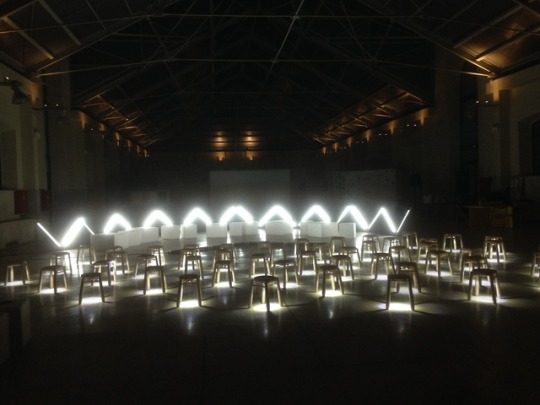
City Stage is a light installation-tool that activates (public) spaces and communities by transforming those spaces into stages for (participatory) artistic and performative interventions.
City Stage can be installed in countless variations; each light beam can be controlled individually through a combination of analogue and digital systems, giving the possibility to create a great variety of visual light forms.
It was produced together with craftsmen in Istanbul and Thessaloniki. So far, city stage has been used to explore its possibilities in various workshops and events as a tool for pushing the boundaries of performance and audience participation.
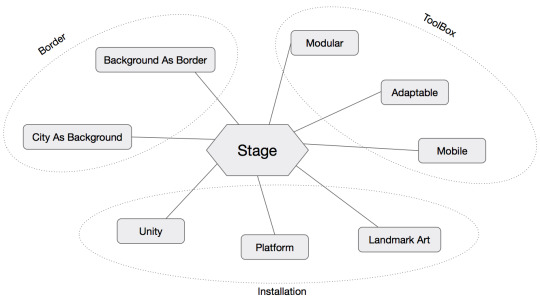
-
vimeo
-
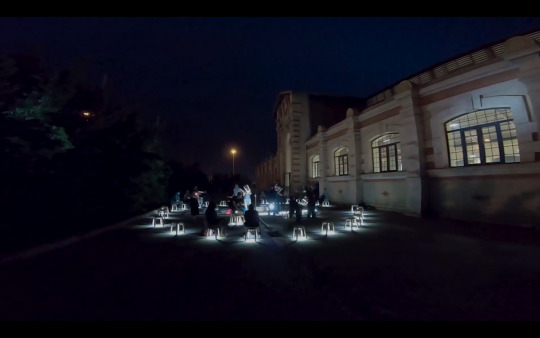
“Introduction to Freevolous City Stage”, workshop with theatre director Giannis Paraskevopoulos, Project LABattoir, Thessaloniki, May 2019
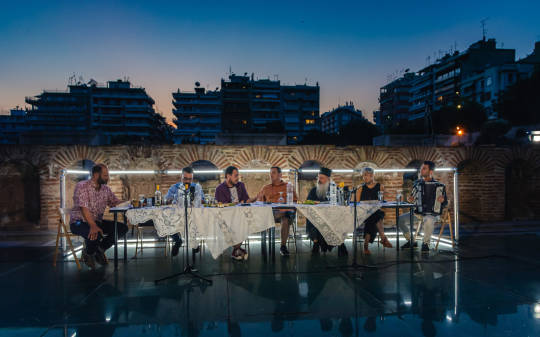
“Symposium III”, participatory performance by theatre director Thanasis Kritsakis, Project LABattoir, Roman Forum, Thessaloniki, June 2019
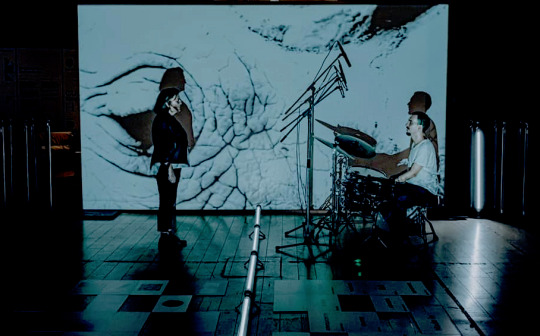
“Post-Europe: a work-in-progress”, installation by Elli Chrysidou, live interaction by Giorgos Klountzos-Chrysidis, Project LABattoir in partnership with Goethe-Institut - Project Freiraum, Thessaloniki, October 2019
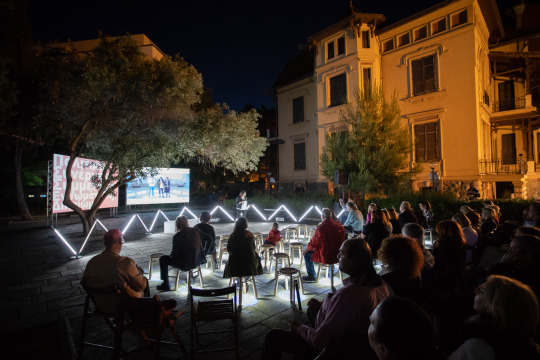
Political demonstration, performance, Thessaloniki, June 2019
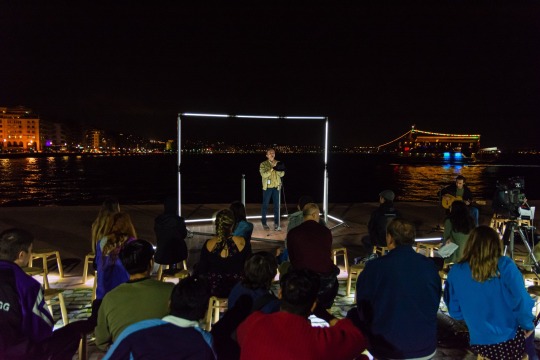
“Sandmen: dreaming in/of Europe”, participatory performance by actor-director Thomas Velissaris, Project LABattoir in partnership with Goethe-Institut - Project Freiraum, Thessaloniki, October 2019
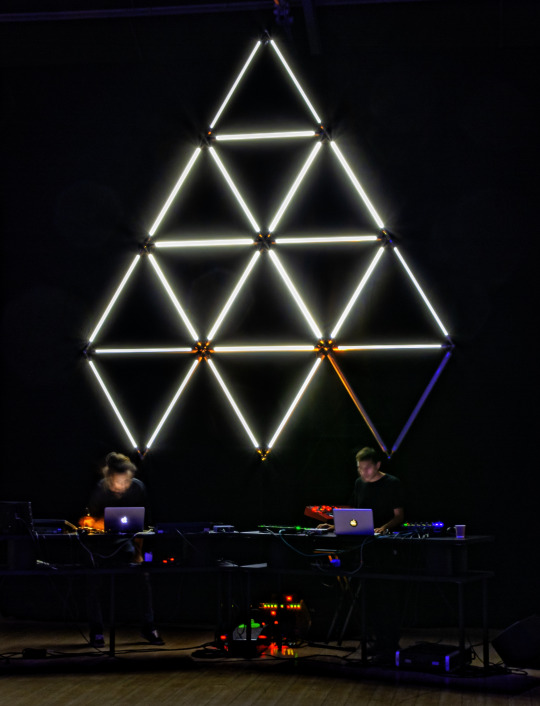
AND.ID x Bilal Yılmaz, live audiovisual performance, Project LABattoir in partnership with Goethe-Institut - Project Freiraum, Thessaloniki, October 2019
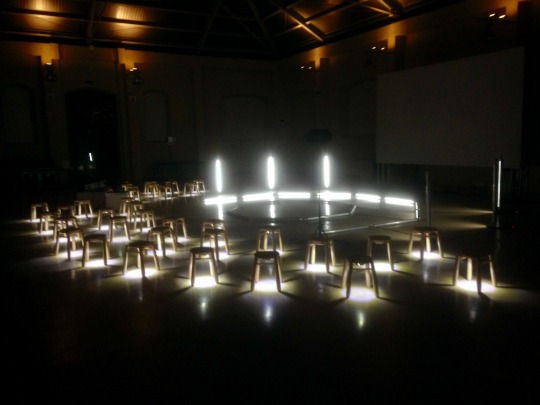
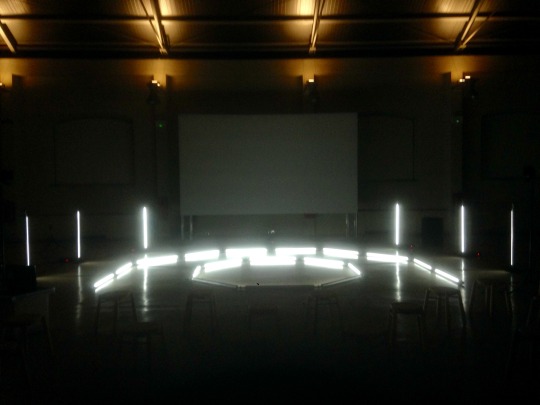
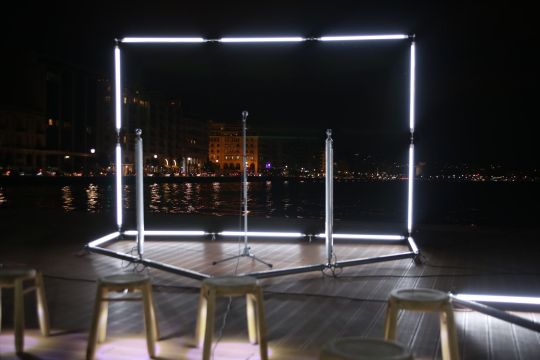
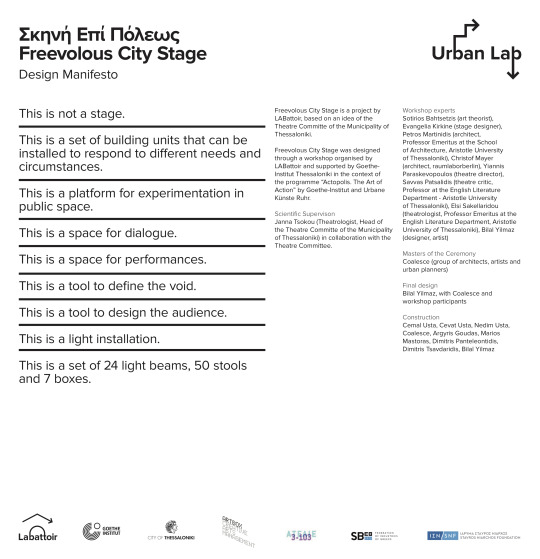
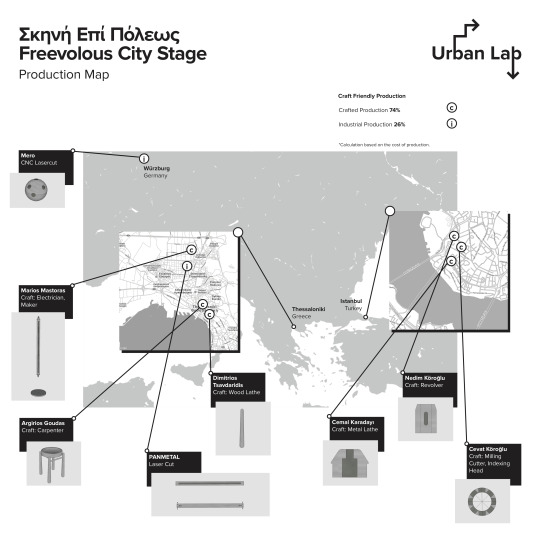
The City Stage was produced together with craftsmen from Thessaloniki and Istanbul: 74% crafted production & 26% industrial production. (Calculations based on the cost of production)
City Stage: design manifesto, production map, sketches
City Stage: project generation, workshops, design concept
Freevolous City Stage: link
0 notes
Text
HOSTEL BAY – One of the famous Tourist Destination In Greece
Are you looking for hostels Athens booking, then you no need to go anywhere. We at Hostel bay provide you incredible packages with an enjoyable experience. These hostels are elegant boutique indeed that offers Athens accommodation right by the Ancient Roman Forum.
One of the most prominent hostels is Hostel Olympia which is just 5 minutes away from Aristotelians square.
It is the center of the bustling town of Thessaloniki; this elegant hotel offers you decent packages’, which is very affordable for everyone.
Offers Hostel Athens provides you some exquisite benefits:-
It gives you one child under two-year free stay
Utmost pleasure available such as food, cleaning facilities, free internet access, or more benefits.
The hostels do have a high star rating through famous travel bloggers and travelers.
Hurry up!! Book with us and relish your holidays…
Find an our an original post:https://hostelbay.blogspot.com/2020/06/hostel-bay-one-of-famous-tourist.html
0 notes
Photo

Full text write on https://easy-travel.pw/6-reasons-to-visit-thessaloniki-greece/europe/
6 Reasons to Visit Thessaloniki, Greece
01 of 06
Attend a Feast of Festivals
Thessaloniki Travel
From high art to street art, popular culture to cultural excellence—Thessaloniki reels from one international festival to another throughout the year. These are just a few:
Reworks brings together an eclectic mix of music—from experimental sound to modern classical music and contemporary electronics. It's five days and nights of performances by well established and emerging artists from across Europe.
The Street Mode Festival is a four-day celebration of live, street-based performances and visual arts. There's music, gigs, DJ sets, and MC competitions; graffiti and street art shows and competitions; street dance and street sports—parcour, freerunning, and BMX. Also, lots of side events and a children's program.
Thessaloniki International Film Festival is a November celebration of the best in contemporary filmmaking with shows, forums, professional masterclasses, and discussions. Missed it at TriBeCa or Sundance? Catch up with it in Thessaloniki.
The Dimitria Festival, a major cultural event in autumn combining art exhibitions, music, theater and dance performances, films, discussions, and workshops. Artists, performers and experts gather from all over the world.
02 of 06
Stay out All Night
Thessaloniki Travel
Nightlife is one of the main reasons Thessaloniki should be on your 2018 hot list. Whether it's tavernas with live rembetika music or vast pulsating clubs, the party goes on into the wee hours in pockets of entertainment scattered around the city. , National Geographic recently named it one of the top ten cities in the world for nightlife, claiming more bars and cafes per capita than any other city in Europe.
Try Mylos. It's a vast entertainment and nightlife space that was once a flour mill in the warehouse area of Port in the western part of the city. It's full of cafes and bars, music venues, concert, exhibition and performance spaces, and hundreds of milling revelers. It's where the Reworks Festival is usually based. Or check out what's happening at Fix, the Fix Factory of Sound, a live music venue that has concerts and club nights and a kind of mosh pit scene.
For less hectic nightlife, stroll the restaurant and entertainment district of Ladadika where there are plenty of bars and cafes with music. And look for rembetika, the traditional, political blues music of Greece, in rembetadiko—small tavernas where musicians sit on the edge of the stage and perform while people eat and drink. Rembetika is the Portuguese Fado or the Canto Flamenco of Greece and these days it's the hipster's choice.
03 of 06
Enjoy a Vibrant, Eclectic Restaurant Scene
Thessaloniki Travel
Thessaloniki's great variety of informal dining and modern, irreverent interpretations of traditional dishes—at very reasonable prices—has recently won the city the title of Gastronomic Capital of Greece.
Some districts are better than others for grazers and diners alike. Try Ladadika for lively bistros, island-inspired dishes, and a casual, young atmosphere. In the seafood and vegetarian heaven that is Greece, Palati is a good choice for meat eaters and there's usually bouzouki music to go with.
Along the Port area, restaurants and cafes are a bit pricier, because of the seafront views. But the people watching here is great, so plan to at least have coffee or sunset drinks. And for a special, bust-the-budget blowout, try 7 Thalassas for very good seafood.
For some of the best views and an ever-changing selection of little, family-run places, head uphill to the area known as Ano Poli (for Old Town) where you can dine overlooking the whole of the city and port, beside ancient castle walls, for as little as about €20 per person. Downhill from there, Tsinari Square has airy, open cafes and plenty of accomplished, modern variations on traditional mezethedes.
While in Thessaloniki, be on the lookout for Eastern European influenced dishes such as stuffed cabbage or piroshki and try to find the very local specialty known as trahana. It's a cracked wheat or couscous dish served with yogurt or sour milk.
04 of 06
Wander Great Galleries and Museums
Thessaloniki Travel
Considering the city's location at the crossroads of European and Ottoman culture, you'd naturally expect Thessaloniki to have some terrific museums of ancient history. And the city does not disappoint. The Archaeological Museum of Thessaloniki, one of the largest museums in Greece, traces the civilization of Macedonia from pre-history to late antiquity and it's crammed with dazzling ancient treasures.
The Museum of Byzantine Culture opened to much applause in the 1990s, is home to collections that cover the transformation of Roman religion and the early Christian Church to the 15th-century fall of Constantinople.
But if you're not into ancient history, there are wonderful contemporary museums and galleries such as:
The architecturally interesting Macedonian Museum of Contemporary Art.
The Thessaloniki Museum of Photography, with regular and internationally relevant exhibitions and events.
The small but interesting Cinema Museum and Film Collection, the only cinema museum in Greece and hub for the city's annual film festival.
The Olympic Museum of Thessaloniki, the only museum of its kind officially recognized by the Olympic Committee.
There's even a museum devoted to basketball, The ARIS Basketball Museum.
Continue to 5 of 6 below.
05 of 06
Explore Ancient Monuments in a Modern Setting
Thessaloniki Travel
Like most major cities in the Balkans, the built environment of Thessaloniki has suffered more than its fair share of war wounds. Much of the city has been built or rebuilt during the 20th and 21st centuries.
But the evidence of ancient Byzantine and Ottoman architecture is dotted all around the city, each standing out like a gem in its modern setting.
Some, like the White Tower, are prominent and important. The tower, which has become a symbol of Thessaloniki, was a 15th-century Ottoman fortification, built to replace an earlier Byzantine fortress. Only 75 visitors are allowed in at one time. Even if you aren't a history buff, it's worth the climb to the top (34 meters—about 10 stories) for the views.
Others, like the Byzantine Baths, are found in hidden corners of residential districts. The baths were built around 1300 and, remarkably, were fully functional for almost seven centuries—until 1940.
06 of 06
Hit Some UNESCO World Heritage Sites
Thessaloniki Tourism
The whole of Thessaloniki is UNESCO listed as an Open Museum of Early Christian and Byzantine Art. There are 15 different buildings, sites, and monuments in the listing that covers the transition from Roman through early Christian times to the Ottoman occupation.
You can follow the trail of the Paleochristian and Byzantine Monuments of Thessaloniki but if that seems like too much hard work, at least visit The Rotunda, a remarkable building that has survived earthquakes and empires and has fragmentary remains of beautiful early mosaics.
The Rotunda, along with the Arch of Galerius nearby, started life as part of a Roman Emperor Galerius's 4th-century imperial palace. Emperor Constantine had it consecrated as a church. It remained a church for 1,200 years until Thessaloniki fell to the Ottoman Empire. In the 16th century, it became the Mosque of Suleyman Hortaji Effendi and it still has the minaret—the only one in the city—that was added then. Finally, in 1912, when the Ottoman Turks were expelled from Greece, the Rotunda was reconsecrated as a Greek Orthodox Church.
Today, it is formally known as the Church of Agios Georgios but most people refer to it simply as the Rotunda. A huge and impressive example of late Roman architecture, it is a must visit site.
#travel #airlinetickets #airtickets #cheapairfare #planetickets #travelinsurance #travelquotes #travelblogger #traveller #travelling #travelocity #travelodge #vacation
0 notes
Video
youtube
Bahar Boutique Hotel in Thessaloníki, Greece (Europe). The best of Bahar Boutique Hotel Hotel. Welcome to Bahar Boutique Hotel in Thessaloníki, Greece (Europe). The best of Bahar Boutique Hotel. Subscribe in http://goo.gl/VQ4MLN Common services included include: wifi available in all areas. In the section of food and drink we will enjoy: on-site coffee house, bottle of water, breakfast options, breakfast in the room and bar. For the reception services we will be able to find luggage storage, tickets to attractions or shows, safety deposit box, 24-hour front desk and ticket service and tour desk. For family leisure we will have children television networks. The cleanliness of the facilities will include trouser press, daily maid service, laundry, ironing service and dry cleaning. If you travel for business matters in the accommodation you will have fax/photocopying. We can highlight other services like , , soundproof rooms, air conditioning, , , heating, , non-smoking throughout, non-smoking rooms, and lift [https://youtu.be/eJdlmSQP6bs] Book now cheaper in https://ift.tt/2t9s1JV You can find more info in https://ift.tt/2lcFUng We hope you have a pleasant stay in Bahar Boutique Hotel Other hotels in Thessaloníki Mediterranean Palace https://youtu.be/xW8jWdvSAnw Hotel Nikopolis https://youtu.be/Ns4PTGGptxs Anatolia Hotel https://youtu.be/GyfnnH4xfEM The Excelsior https://youtu.be/0KaCdmbS6Qo Holiday Inn Thessaloniki https://youtu.be/IZ_5EM3w2UM City Hotel Thessaloniki https://youtu.be/E1bmMV4YaIU Porto Palace Hotel https://youtu.be/_ChbINvGcjg Hyatt Regency Thessaloniki https://youtu.be/DVgEy752urc Grand Hotel Palace https://youtu.be/OAj3qbpQZv4 Lazart Hotel https://youtu.be/eOPTXe4-zT8 Colors Urban Hotel https://youtu.be/N_Z01xNgHZU Electra Palace Thessaloniki https://youtu.be/o2-2SdESnEU The Met Hotel https://youtu.be/8w5cPyJu35I Daios Luxury Living https://youtu.be/MuNi-WZfU2Y Other hotels in this channel Shanghai Marriott Hotel City Centre https://youtu.be/GwZuBCXcKvg Hotel Le Agavi https://youtu.be/cjQ5wpj8VJA Robins Club https://youtu.be/OtQ3UaeTs7A Hôtel Kleber Champs-Elysées Tour-Eiffel Paris https://youtu.be/daozQ98mAeg Hotel Dory https://youtu.be/QzlNmH7E2UQ Southern-Club Station 1 Hotel https://youtu.be/8BhgCPriZv8 Olympic Residence Deluxe Apartments https://youtu.be/IkQTk9i5gBY Grand Park Kodhipparu, Maldives https://youtu.be/qW2_H4W1WrI Eurostars Berlin https://youtu.be/uYkROzffIOk Hotel Windsor https://youtu.be/3B0s3aL6aQo Hyakunagaran https://youtu.be/praEgW0NcMs Royal Palm Hotel https://youtu.be/Zfe-UKjgYTE Mount Juliet Estate https://youtu.be/k7eINBM7fXs Amazing Celaya Hotel & Suites Business Class https://youtu.be/uwbXNU8sRkI Hotel Nueva Tabarca https://youtu.be/CiUIb5I1Bng In Thessaloníki we recommended to visit In the Greece you can visit some of the most recommended places such as Torre Blanca de Tesalónica, Plaza de Aristóteles, Arco de Galerio, Archaeological Museum of Thessaloniki, Santa Sofía, Iglesia de San Demetrio, Museum of Byzantine Culture, Rotonda de Galerio and Atatürk Museum. We also recommend that you do not miss Jewish Museum of Thessaloniki, Macedonian Museum of Contemporary Art, Museum of Photography, Thessaloniki, Roman Forum, Puerto de Tesalónica, Thessaloniki Science Center and Technology Museum, We hope you have a pleasant stay in Bahar Boutique Hotel and we hope you enjoy our top 10 of the best hotels in Greece based in Bahar Boutique Hotel Tripadvisor Reviews. All images used in this video are or have been provided by Booking. If you are the owner and do not want this video to appear, simply contact us. You can find us at https://ift.tt/2iPJ6Xr by World Hotel Video
0 notes
Photo

Ruins of a second century Roman Forum at Thessaloniki #historicplaces #roman #romanforum #Greece #macedonia
0 notes
Photo

#AroundTheWorld . . #Thessaloniki #Greece . . #ItsAllAboutFreedom #LiveFree #Fun #Freedom #Fulfillment #Travel #Traveling #Vacation #Amazing #BucketList #InstaTravel #TravelGram #Lifestyle #Autumn #WorldTraveler #Ig_Greece #Ig_Thessaloniki #Travel_Greece #WeLoveGreece_ #TasosMasias #MasProTraveler (at Ρωμαϊκή Αγορά Θεσσαλονίκης-Roman Forum Thessaloniki)
#greece#tasosmasias#masprotraveler#ig_greece#livefree#travel#freedom#autumn#fun#amazing#vacation#itsallaboutfreedom#travel_greece#welovegreece_#lifestyle#worldtraveler#aroundtheworld#traveling#bucketlist#instatravel#ig_thessaloniki#travelgram#fulfillment#thessaloniki
0 notes
Text
15 Best Things To Do in Thessaloniki, Greece: An Expert’s Guide
Despite the fact that there are tons of things to do in Thessaloniki, Greece’s second-largest city is not on everyone’s radar. To Greeks, Thessaloniki is a legendary student destination with a cool, relaxed vibe that distinguishes the city from the rest of the country. But, many tourists haven’t even heard of it!
This port city has 3,000 years of history, and its early Christian and Byzantine architecture are listed as UNESCO World Heritage sites. Not to mention, the influences of Romans, Byzantines, Ottomans, and Jews give Thessaloniki a very unique character.
Having lived in Greece for almost six years, I can testify to the fact that Thessaloniki is a dynamic city well worth visiting. It really has it all — tons of interesting history, a beautiful seaside, and exciting nightlife.
As a traveller, you may be wondering what to do in Thessaloniki, which is where I come in. After reading this article, you’ll be surprised by the variety of things to do here.
Here it goes, my list of the 15 best things to do in Thessaloniki!
1. Visit The White Tower
The fortified White Tower on the seafront is Thessaloniki’s main landmark, which houses an exhibition about the city’s Byzantine history.
During Ottoman times, the White Tower was used as a prison and supposedly called “Blood Tower” due to the many executions that took place there. It got the name “White Tower” after it was painted white, although today it has a yellowish colour.
From the White Tower, you have a lovely view of the entire city and the Mediterranean Sea. If you have only a few hours in Thessaloniki, a visit to the White Tower would be the one thing you should definitely make time for. And because of its central location, you’ll probably want to start any trip to Thessaloniki here.
The White Tower is definitely one of the top things to see in Thessaloniki and at only €4, it’s quite an affordable attraction as well. The museum is open every day from 9 am to 4 pm, and in the summer, the hours extend from 8 am to 8 pm. If you’re not keen on climbing up the tower, you could also just look at it from the outside.
2. Take a Walk Along The Seafront
At the seafront, you can enjoy a lovely walk along the promenade, one of the best places to visit in Thessaloniki. I remember being fascinated that I had finally found a place in Greece where I could walk for hours without being disturbed by cars or motorbikes!
You could easily spend several hours on Thessaloniki’s waterfront, especially if the weather is particularly nice. If you walk south from the White Tower along the promenade you will pass by the statue of Alexander the Great who was born in Pella, about 1.5 hours from Thessaloniki. A trip to Pella is a great day trip from Thessaloniki. Learn more about that trip, here.
Thessaloniki’s waterfront is also home to one of the city’s most instagrammable spots — the cute umbrella sculpture. If you keep walking farther south, you’ll see several small parks, such as the Garden of Sands and Garden of Remembrance.
The view of Thessaloniki’s port from the promenade is amazing, and farther north you will find tons of bars, cafés, and restaurants. If you’re into cycling, Thessaloniki’s promenade is probably the best place in all of Greece to be able to ride your bike for several kilometres without worrying about cars. Parents with children will appreciate this car-free zone as well.
3. Explore Aristotelous Square
The city’s biggest square is one of the most popular places to visit in Thessaloniki and a great place to stop for a coffee. This is the modern center of the city and a major meeting place. You will find various cafés and restaurants in this pedestrian zone.
People like to go shopping in the streets and markets close to the square, and you will definitely pass by here more than once during your time in Thessaloniki. Aristotelous Square is one of the most famous squares in all of Greece and one of the most famous spots in the city. If you visit during Christmas or New Year’s Eve this is a great place to see how the locals celebrate.
Don’t forget to take a quick photo of the statue of Aristotle after whom the square was named. But, keep in mind that the square is also famous for the fact that political protests usually take place here. During a rally or protest, you might want to avoid the square.
4. Learn About The City’s Jewish History at The Jewish Museum
The Jewish Museum of Thessaloniki presents the history of the Jewish community in Greece’s second-largest city. The Jewish community in Thessaloniki was particularly strong during the Ottoman Empire when Jewish refugees arrived from Spain and Portugal where they faced severe persecution.
Jews made up the biggest community in Thessaloniki until the Great Fire in 1917 when many Jews left the country. During the Second World War, almost the entire Jewish population of Thessaloniki was deported to Auschwitz. Today, only about 1,200 Jews still live in Thessaloniki which still makes it the second-largest Jewish community in Greece.
While the community is very small today, its impact on the history of Thessaloniki is enormous.
The Jewish Museum on Agia Mina street is open from Tuesday to Sunday, and tickets are an affordable €5. In 2020 the Jewish Museum is scheduled to move to a bigger building, so it’s best to check their website for the latest news. If you’re wondering what to do in Thessaloniki that is not on everyone’s list, this museum is for you.
5. See The Roman Agora (One of The Top Things To Do in Thessaloniki)
One of the best things to see in Thessaloniki are the excavations of the Roman Agora of Thessaloniki (also known as the Roman Forum). This ancient Roman market is located close to Aristotelous Square and houses the remains of a theater and two Roman baths.
The best part is that it continues underground where you can find out more about the Roman Forum in its own museum. If you have any interest in archaeology at all, a visit to the museum is a must — especially since one of the two Roman baths is still buried underneath the city. In the summer, going underground can be a great place to escape the heat!
In any case, it’s certainly impressive to see this ancient square in the middle of the modern city of Thessaloniki. The museum is open from Monday to Saturday between 8 am and 3 pm, and you can get in for €4.
6. Visit Agios Dimitrios Basilica
Thessaloniki’s main church, Agios Dimitrios, is one of the top places to visit in Thessaloniki. The basilica burned down almost completely in the Great Fire of Thessaloniki in 1917, but enormous reconstruction efforts returned the church to its splendour. Inside the church, you can even find unique mosaics that survived the fire.
Agios Dimitrios Church is located just a few steps from the Roman Forum so be sure to combine the two. Dimitrios is Thessaloniki’s patron saint which explains the basilica’s importance. You can see the place where he supposedly died in the crypt underground.
And, because of Thessaloniki’s interesting history, you can even see the remains of a Roman bathhouse on which the church was built. This church presents a great overview of the city’s history. Photography is allowed, and as it’s a church, entrance is free.
7. Take a Hike Through Thessaloniki’s Old Town: Ano Poli (Upper Town)
The most beautiful part of Thessaloniki is certainly its old town, or Upper Town. You can go for a stroll through the cobblestone alleys and will see the traditional Balkan houses that date back to Ottoman times. A walk in the picturesque Upper Town is one of the activities in Thessaloniki that are free and can be done at any time of day.
This part of Thessaloniki survived the 1917 fire and therefore kept its traditional look and feel. Plus, you can find old churches and towers here and remains of the old Byzantine walls. You could spend hours exploring this gorgeous neighbourhood.
To many Greeks, Ano Poli is the most authentic neighbourhood of Thessaloniki. It’s here, that you can find traditional taverns playing rebetiko music, not for tourists, but for the locals. Enjoy getting lost is the maze of streets in Thessaloniki’s oldest neighbourhood.
8. Check Out The Eptapyrgio (Yedikule)
If you head farther up from the Upper Town, you will reach the Eptapyrgio fortress which gained notoriety when right-wing totalitarian Greek regimes imprisoned political prisoners there. This inner part of the wall was built by the Byzantines but got its name (“Seven Towers”) when the first Ottoman governor added additional towers.
The fortress itself is quite impressive to look at, but the view from here is spectacular as it’s the highest point in the city. While the view from the White Tower cannot be beaten, you get a different perspective from the Eptapyrgio — which is located on Thessaloniki’s ancient Acropolis.
What I found even more impressive are the old prison corridors which connect the place to Greek rebetiko music. “Yedikule” is one of the most famous rebetiko songs, and the protagonist is a prisoner in this famous prison. The doors and cells are a haunting reminder of what happened here in the 20th century.
9. See The Atatürk House
For something a little less touristy, visit the birth house of the most famous person from Thessaloniki, Mustafa Kemal Atatürk. The building now houses the General Consulate of Turkey, the state which Mustafa Kemal founded. This may not be of interest to everyone, but as an ethnic Turk, I was very moved by my visit here.
Most of the furniture here is still original, and there are even some of Atatürk’s and his family’s belongings. It’s one of the places to visit in Thessaloniki if you want to see something that’s not on everyone’s radar.
Even if you’re not interested in Atatürk and his life, there is another reason to visit his birth house — it’s an excellent way to see one of the traditional houses in the Upper Town from the inside. It’s open every day from 10 am to 5 pm, and entrance is free.
10. Visit The Rotunda (One of The Main Things To Do in Thessaloniki)
When you head back down towards the modern center of the city, you’ll spot the ancient Rotunda. It’s one of the oldest things to see in Thessaloniki and used to be a Roman temple, then a church, and later a mosque. Earthquakes have caused serious damage to the building, but some of the mosaics inside have been restored.
Just a few steps from the Rotunda you’ll find another Roman monument, the Arch of Galerius. It commemorates the Roman victory over the Persians and is also known as Kamara. This used to be Thessaloniki’s main entrance gate, walking through it is one of the activities in Thessaloniki that will connect you all the way back to Roman times.
The early Christian mosaics in the Rotunda are absolutely stunning. Together with the Arch of Galerius, the Rotunda is considered one of the most important places to visit in Thessaloniki. It’s open every day between 8 am and 5 pm in the winter and until 7 pm in the summer.
11. Take a Free Walking Tour
I firmly believe that free walking tours are one of the best ways to get to know a new city. Nowadays, free walking tours with a local guide are popular in most major cities. Why pay for a tour when someone will offer it for free and you only tip the guide based on how good the tour was?! Of course, the same is true for Thessaloniki.
Being a major student city, you can definitely find a young and dynamic guide who will passionately tell you about their fascinating city. This will certainly provide the right balance between archaeological sites and the more modern aspects of life in Greece’s second-largest city.
Free walking tours usually last between two to three hours and introduce you to the major landmarks. That way, you get some background information about things you have already seen or are planning to see later. There are a couple of companies you can choose from — FreeTour and GuruWalk both have good ratings.
12. Experience Ladadika (One of The Coolest Things To Do in Thessaloniki)
If you ask any Greek person what to do in Thessaloniki they will certainly tell you to explore Ladadika. This charming neighbourhood close to the port is full of restaurants and bars. As is often the case with these neighbourhoods, it used to have a bad reputation but is now super trendy.
Ladadika has everything the traveller could hope for in a big European city — cobblestone streets, colourful old houses, and lots of traditional food and music. In fact, the neighbourhood is so alive that many consider it the best party district in all of Greece. But, that doesn’t mean you won’t enjoy a walk through the area during the day as well.
The neighbourhood was named for the oil shops that used to be concentrated in the area. During Ottoman times, the main market was located here as well. Like the promenade and Aristotelous Square, it’s a pedestrian-only zone which any visitor to Greece will appreciate. This neighbourhood is one of the top places to visit in Thessaloniki, don’t miss it.
13. Tour The Archaeological Museum of Thessaloniki
As in many places in Greece, one of the main things to do in Thessaloniki is going to an archaeology museum. This is where you will find out more about Thessaloniki’s history until the Roman era. You’ll probably need around two hours here as there is so much to see in the exhibition.
The Archaeological Museum of Thessaloniki is located near the White Tower the statue of Alexander the Great. The exhibitions cover the period between prehistory and late antiquity. Most of the artefacts are from Thessaloniki and its vicinity.
The museum is open all week from 8 am to 8 pm, and a ticket is €8, but you might want to take advantage of the museum pass which allows entrance to the Archaeological Museum, the White Tower, the Galerian Complex, the Museum of the Roman Agora, and the Museum of Byzantine Culture. For €15 you can see all the important places to visit in Thessaloniki.
14. See The Old Hamams (and Soak at The New Ones)
Thessaloniki has some Turkish baths that you can visit: Bey Hamam, Yeni Hamam, Paşa Hamam, and Yahudi Hamam (Pazar Hamam). Sadly, none of them are still in use. So, while you can marvel at the architecture, you will not be able to experience an authentic Turkish bath there. They are now used as restaurants and for cultural events.
However, one of the most relaxing activities in Thessaloniki would be to book a treatment at the new Hammam Baths as a spa experience.
The Hamam is inspired by the traditional Turkish baths and offers various services. You can either go for a self-service visit or add on various massages or treatments. After you relax in the steam room, you get to indulge in a glass of Turkish tea and a few pieces of lokum (Turkish delight).
The self-service experience costs €25 while the basic “Ali Mama” service costs €45. Make sure to book an appointment in advance to ensure availability. For natural thermal baths, take a day trip to stunning Pozar and Edessa. Learn more about that tour here.
15. Go For Drinks in The Student Area Around Kamara/Rotunda
While the Arch of Galerius and the Rotunda are popular places to explore during the day, this is also a popular nightlife area. With its reputation as a student city, one of the main activities in Thessaloniki is definitely checking out its lively student (party) scene.
There are various bars and cafés here, which are cheaper than the ones in the Ladadika neighbourhood. If you’re in Thessaloniki in the summer, you can spend the whole night outside. If you’re on a really tight budget, you won’t have to enter a bar at all — simply get booze from a kiosk and drink it outside.
Don’t miss this area as it comes to life at night with musicians, artists, and students having an amazing time. And as usual in such neighbourhoods, you can also find the cheapest street food here.
Day Trips From Thessaloniki
While there are numerous things to see, do and eat in the city itself, there are a few great day trips you can take as well.
Meteora Monasteries: This awe-inspiring site is UNESCO listed and is one of the top places to visit in the country. Join a full-day, highly-rated tour and see what all the fuss is about. Click here for details about the tour, and learn more in our article: Meteora Monasteries: A Guide to Greece’s Mythical Landscape.
Mount Olympus and Dion: Learn about the culture and history of the impressive Mount Olympus, hike Enipeas gorge and enjoy lunch with a stunning view. Learn more about this popular day trip here.
Pozar Thermal Baths and Edessa: Soak in natural thermal hot springs, gaze at the tallest waterfall in the Balkans, and enjoy lunch in a picturesque village. Find out more about this fun day trip here.
Now You Know What To Do in Thessaloniki!
With all these things to do in Thessaloniki, I’m sure you’ll have a fun and exciting trip to Greece’s second-largest city. You will get to see a lot of history but also experience the student nightlife that is typical of Thessaloniki. And you’ll learn more about the city’s multicultural past.
I love Thessaloniki because it’s quieter than Athens, the people are friendlier, service is better, and it was a lot more relaxed. And because of the many students, a lot of the things to do in Thessaloniki are either free or quite cheap. So make sure to take advantage of all these things and book your trip to Thessaloniki now.
And if you’re wondering where to go next, don’t worry, there are lots of options. From Thessaloniki, you can explore other parts in the north of Greece, such as the gorgeous Chalkidiki peninsula with its stunning beaches. Or you can travel further north to explore other some of the Balkan countries (if you ask me my absolute favourite city in the Balkans is Tirana).
Are you travelling to other areas in Greece? Check out our top posts:
The Complete Travel Guide to Greece – Everything You Need to Know
The Best Time to Visit Greece and the Greek Islands
61 Fun Things To Do in Greece
15 Things To Do in Santorini – An Insider’s Guide
15 Cool Things to Do in Zakynthos
15 Best Beaches in Greece
21 Things To Do in Paros
27 Amazing Things To Do in Athens
21 Things To Do in Mykonos – Best Sights, Food and Activities
Note: All images in this article are provided by Shutterstock.com. Check them out for awesome royalty-free images and videos.
The post 15 Best Things To Do in Thessaloniki, Greece: An Expert’s Guide appeared first on Goats On The Road.
15 Best Things To Do in Thessaloniki, Greece: An Expert’s Guide published first on https://travelaspire.weebly.com/
0 notes
